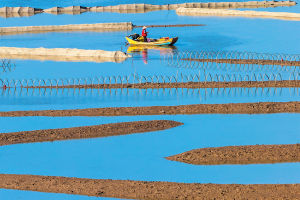Landscape architecture is the art of designing and planning outdoor spaces, such as parks, gardens, and public spaces. A good photo of landscape architecture can capture the essence of the space and communicate its design and beauty to the viewer.
Whether you are a professional photographer or an amateur, here are some tips on how to take a good photo of landscape architecture.
1. Research the location
Before you take your camera out, it's essential to research the location you are planning to photograph. You should know the best time of day to shoot, the best angles, and any potential obstacles or challenges that may arise. This information can help you plan your shoot and ensure you get the best possible results.
2. Choose the right equipment
While you don't need the most expensive camera to take a good photo, it's important to choose the right equipment. A wide-angle lens can capture more of the landscape and create a sense of depth in the image. A tripod can help you keep the camera steady and avoid blurry shots.
If you're planning to shoot during the golden hour or at night, a tripod will be crucial to stabilize the camera and avoid blur.
3. Look for interesting perspectives
One of the most important aspects of landscape photography is finding an interesting perspective. Don't just take the same shot as everyone else – try to find a unique angle or viewpoint that will make your photo stand out.
Look for leading lines or patterns that draw the viewer's eye into the image. You can also experiment with different camera angles, such as shooting from a low or high vantage point.
4. Pay attention to the lighting
Lighting is critical in landscape photography, and it can make or break a shot. The golden hour, which is the hour after sunrise or before sunset, is often considered the best time to shoot as the light is soft and warm. However, shooting at other times of the day can also produce stunning results.
Pay attention to the direction of the light and how it illuminates the landscape. Consider using a polarizing filter to enhance the colors and reduce glare.
5. Use the rule of thirds
The rule of thirds is a fundamental principle of composition in photography. It involves dividing the frame into thirds both vertically and horizontally, creating a grid of nine squares. The idea is to place the subject or point of interest at one of the intersections of the grid, which creates a more balanced and visually appealing image.
In landscape photography, this can mean placing the horizon on the upper or lower third of the image.
6. Focus on the details
While landscape photography is about capturing the big picture, don't forget to focus on the details. Look for interesting textures, patterns, and shapes within the landscape. Zoom in on individual elements, such as a flower or a tree, to create a more intimate and personal image.
These details can add depth and interest to your photo and make it more compelling.
7. Edit your photos
Editing your photos can help bring out the best in your landscape shots. You can adjust the exposure, contrast, and saturation to enhance the colors and tones in the image. Be careful not to overdo it, though – the goal is to enhance the natural beauty of the landscape, not create an artificial-looking image.
Taking a good photo of landscape architecture requires careful planning, attention to detail, and a good eye for composition. By following these tips, you can create stunning images that capture the beauty and design of outdoor spaces. Remember to experiment, be creative, and have fun with your photography!


